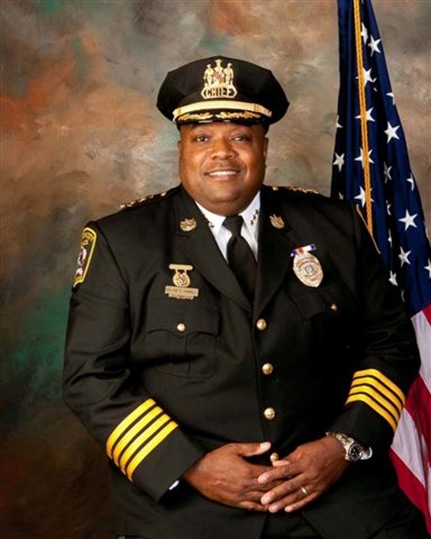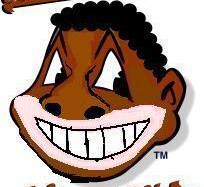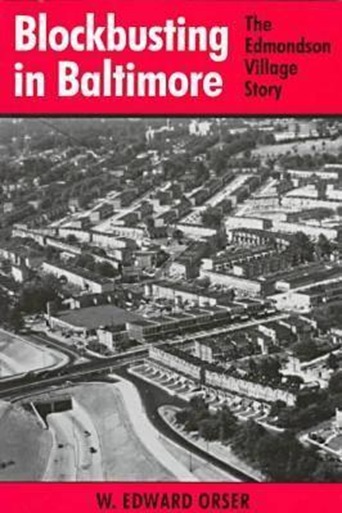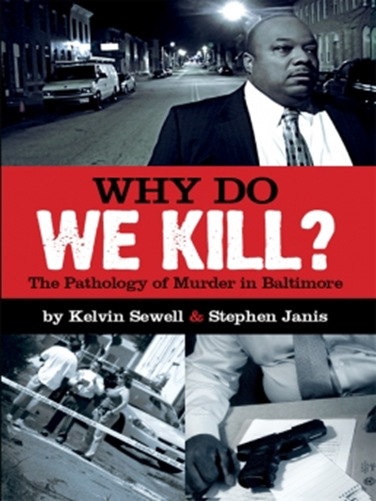SBPDL
April 15, 2014
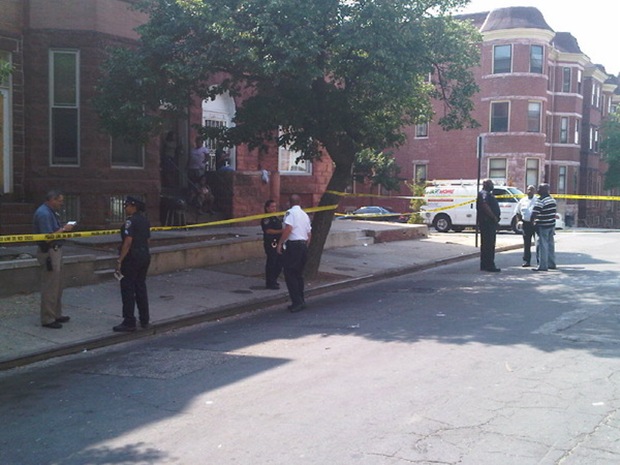
It’s as if a great flood came and washed away all that was good, leaving behind fragments of a civilization no longer resembling what existed in the antediluvian time period.
No life raft was available, with people forced to flee for higher ground.
The legacy of declaring Restrictive Covenants (1948) unconstitutional and implementing a radical civil rights movement, enshrining it into law in 1964…
Blockbusting in Baltimore: The Edmondson Village Story is W. Edward Orser’s story of a racial change in an almost entirely white enclave of Baltimore, with its transformation into just another black slum.
This story is not just of Baltimore, but could be Newark, Camden, Philadelphia, Detroit, Atlanta, Birmingham, Memphis, Charlotte, Dallas, Houston, Milwaukee, or Chicago. It’s a story of Anywhere, USA.
Once again, W. Edward Orser’s book offers the powerful lesson “race is all that matters: adherence to this principle should be the basis for crafting all laws guiding public life.”
We start with this passage from the book:
The Trauma of Racial Change
The recent reflections of two women illustrate the poignancy and complexity of their experience in the west Baltimore neighborhood of Edmondson Village when racial change began to occur on a massive scale in the late 1950s, early 1960s. In an interview I conducted with a white former resident, Marilyn Simkins sought an explanation for the response of whites who panicked and fled the neighborhood: “They saw a very secure world changing very drastically,” she said, ” and they couldn’t accept it. This was distasteful, and in some respects it was forced down their throats, and they felt they had no other choice, I guess.”
In a separate interview session, Margaret Johnson, a pioneer from the era of initial African American settlement in the same neighborhood, described her own feeling about the flight of her white neighbors: “They were friendly, but they were prejudiced. They didn’t want to live where colored people did… They don’t have to say it… They’d didn’t tell you [why they moved]; they just moved.” (p. 1)
We’d hear from Simkins again in the final pages of the book:
White Attitudes and the Trauma of Change
Edmondson Village’s white expatriates dispersed along the natural corridors of suburban migration westward, some to nearby neighborhoods, others throughout Baltimore County’s general Catonsville area and beyond to Howard County. Many friendships and family networks persist, and people often encounter old neighbors on visits to regional shopping centers, churches, or social organizations. The experience of uprooting lingers as an unhealed wound, the source of mixed feelings of nostalgia, bewilderment, bitterness, and social learning. Some believe they have found new suburban havens that provide the social homogeneity and insulation Edmondson Village afforded for a while. But others view life in their new neighborhoods differently as a consequence of the Edmondson Village experience.
Interviews with white former residents of varying ages inevitably evoke considerable nostalgia for the old neighborhood and the lifestyle that accompanied it. Qualities of closeness, neighborliness, commonality, and security bubble forth unprompted in such discussions.
For example, Marilyn Simkins, who was a teenager in the 1950s, offered this summation of her experience: “Personally, I would be satisfied if I still lived there, if things had stayed the way they were. It wasn’t exactly what you would call paradise, but it was a nice neighborhood.”
Some white former residents return periodically to see their former houses and the neighborhoods, but frequently they speak of feeling depressed by the changes they see, especially by signs of deterioration. Simkins, for examples, said wistfully: “It’s just not taken care of anymore. I’ve driven through the area since I’ve moved, and it depressed me so, I don’t go back anymore. (p. 163-165)
Why is it those white people were so fearful of living near black people? Why did they abandon Baltimore (or insert major American city in Baltimore’s place) for new real estate, uprooting their lives in the process?
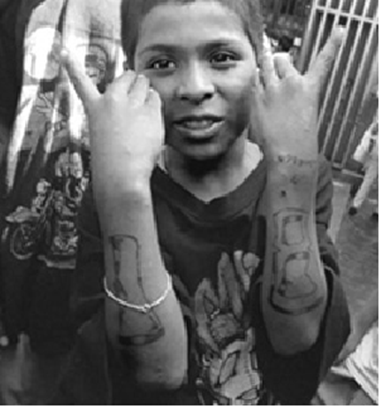
In 1940, Baltimore had 692,705 whites and 165,843 blacks; by 1950, the city had 723,655 whites vs. 255,099 blacks; only a decade later, the white population had dropped to 610,416 to 328,608 blacks; by 1970, the city was nearly 50-50, with 479,837 whites to 425,922 blacks.
What scared whites away?
Kelvin Sewell, a black former Baltimore police officer, wrote a book with Stephen Janis that answers why white people were scared away. It’s called Why Do We Kill? The Pathology of Murder in Baltimore.
It should be titled Why Do Black People Kill? The Pathology of Black Depravity in Baltimore.
Why do we kill?
This is a question that goes to the root of why police exist at all, here as well as elsewhere, which is why I’m asking it. it asks why, in cities like Baltimore that spend a large portion of their budget putting officers with guns into the neighborhoods and communities, do people continue to shoot and kill each other with reckless abandon?
Why, after spending millions of dollars on plainclothes units to disrupt drug dealers, using military-style tactics, does the shooting continue unabated?
These are questions that I want to answer because I think in the end it matters. We have to ask “Why?” We have to think. Because without asking “Why?” we may continue on the same path that has done little improve the city where I was born, raised, and worked my entire life.
Because for all the money and time that’s been poured into policing Baltimore, the city is truly no better off. Hundreds of people year in and year out pick up guns and try and kill each other. Largely because of this, 30,000 citizens moved out of Baltimore over the last decade, a period when the population of the State of Maryland grew by nine percent.
We’ve torn down housing projects and built new homes. Created empowerment zones and spent hundreds of millions to try and breath new life into neighborhoods where much of the killing is done. We’ve paid more than three billion dollars over the past decade on direct costs alone fore aggressive policing, arresting hundreds of thousands of poor, mostly black men and boys. Homicide detectives in Baltimore City have arrested hundreds of killers, even though, admittedly, our clearance rate could be a whole lot better.
Yet if I stood today on the corner of Preston and Greenmount, or Lombard and Carey, the Alameda and Belair, where we have concentrated those resource, I can tell you without question those neighborhoods and the people who still live there are no better off. They are not happier or safer. Instead, there is a sense of despair that has infected many parts of the city, a sense of hopelessness that I know has much to do with the reason people pick up a gun and aim it, with little provocation, at another human being. (p. 9-10)
The conditions black people have created in 63 percent black Baltimore are the same reason why whites fled the city to being with, knowing the racial transformation of their neighborhoods would bring behavioral changes and the lowering of community standards.
Whites didn’t vote for these changes, but they voted with their feet for safer grounds once the formerly all-white neighborhoods tipped black. Sewell continues:
If you walk down the 3500 block of West Garrison Avenue on any given day, you’ll see distinct types of people: menacing young men in white T-shirts drifting up and down the streets, and old ladies sitting on the porches of worn-down row homes.
Both, in a sense represent the contradictory forces that enable the most desolate parts of the city to survive while remaining for the most part dysfunctional.
The old women are a vestige of the city’s past, the sinew, strength and bedrock of what remains of the generations of African-Americans families that came to Baltimore to work in the Sparrows Point steel mill and Dundlack-area auto factories.
Spend some time in District Court on any given day and you will see old black women sitting on the benches, watching grandsons and great-grandsons being ferried in and out of courtrooms in shackles.
And on Garrison Avenue in Northwest Baltimore you will see them sitting on their porches, sitting and the young men, in many cases their grandsons and great-grandsons, hustling, selling drugs, doing whatever it takes to survive. (p. 49)
Some legacy these black grandmothers left in Baltimore, with the arrival of blacks to the city nothing more than a harbinger of destruction as evidenced by the sorrowful state of the city. The condition of Baltimore today is a direct result of those black grandmothers’ generation driving away white people, thereby ensuring the city would endure an Apocalypse God himself wouldn’t condone.
And yet, Sewell leaves us with an interesting hypothetical, a seemingly unanswered question in his book that white flight from the city (well, mainly black people) powerfully is the answer:
Why do people behave so differently 20 miles north of Baltimore City? Why don’t people in Hunt Valley or Monkton shove babies into bags? Are people really that different in essence? Or are we essentially the same, just shaped by our environment or by the neighborhood we live in?
This is not a complicated question, but is has some important implications.
People kill regularly in Baltimore. Twenty miles north they don’t – at least not regularly. What should I conclude from that? What type of boundaries of the land have we created that also take hold of the mind?
But Baltimore is apex of that violent strain. And thus the city begs the question: Are these people naturally amoral or prone to violence? Or, and this is a thought that bothers me more, is the violence I see here simply a payback for the years of neglect and cruelty we inflict upon the less fortunate?
Better put, are we civilized or can we ill afford to be civil? (p. 77)
By the standards of civilization set by white people, black people in Baltimore are not civil; they are the population in Baltimore from which is birthed the violence that drives away white people and the necessary capital to keep alive the flame of a 1st World Civilization.
Were those dangerous black neighborhoods, where menacing black people walk (with black septuagenarians rocking on porch swings), to be filled with white people – you know, the type of people who once lived there but feared raising families around black people who birthed menacing black males – the violence in the city of Baltimore would end overnight.
Overnight.
Wherever white people fled to, they created prosperous communities; whatever black people inherited by white flight, immediately they regressed to the black mean.
Businesses fled, where they once flourished; qualities of schools gave reason for concepts like No Child Left Behind to be implemented, where once students produced high test scores; property value collapsed, where once it seemed destined to only appreciate.
Such is the nature of racial change from white to black.
It isn’t just Baltimore.
It’s not just Newark, Camden, Gary, Milwaukee, Chicago, Birmingham, Memphis, or Charlotte.
It’s not Atlanta, Rochester, Jackson (MS), St. Louis, or Kansas City.
It’s America.
The lesson of Baltimore is one that will empower a new generation of leaders to reassess the trajectory of this country, for the continued path will only ensure more neighborhoods populated by aging black women with menacing black men loitering in white t-shirts.
The Civil Rights Act of 1964 ensured the Baltimore of Marilyn Simkins would turn into the Baltimore of Kelvin Sewell.
This is not worth celebrating.
